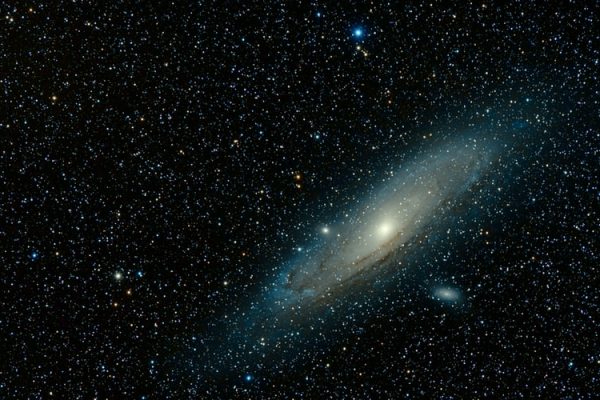He hacked other cryptic alphabets as well – 93 of them, in fact, including alphabets used by the ancient Babylonian, Egyptian, Semitic, Hellenistic, and Hindu civilizations.
He hacked other cryptic alphabets as well – 93 of them, in fact, including alphabets used by the ancient Babylonian, Egyptian, Semitic, Hellenistic, and Hindu civilizations.
It’s safe to say that there is no ancient writing system that has captured the attention of anyone who came across it the way Egyptian hieroglyphic writing has. For centuries, emperors, scholars, travellers, grave robbers, and many others have stopped by the walls of Egypt’s enduring monuments to examine the mysterious symbols and images etched into the stone, thinking about what they might mean. It was in the 1820s that the French scholar Jean-François Champollion finally “cracked the code”, opening the door for the world to study and discover the incredible ancient history of Egypt in a way that had previously been impossible.
But was Champollion really the first person to successfully decipher the Egyptian hieroglyphs? He certainly deserves credit for his groundbreaking achievement in Egyptology. But in reality, the process was underway almost a thousand years before Champollion was even born. Because at the end of the 9th century, an alchemist by the name of Abu Bakr ibn Wahshiyya managed to decipher about half of all Egyptian hieroglyphic symbols. Considering the fact that there are a total of about 700-800 symbols to be cracked, this was an achievement that deserves recognition.
Ibn Wahshiyya’s contribution was first brought to light in 2004 by the London-based Egyptologist Dr. Okasha El Daly, a professor at UCL’s Institute of Archeology. El Daly did extensive research on the study of ancient Egypt in medieval Arab-Islamic writing and convincingly argued that not only did Muslims express a deep interest in the study of ancient civilizations but that they could also correctly decipher Egyptian hieroglyphic script.
But who was this Ibn Wahshiyya, and why was he trying to decipher the hieroglyphs in the first place? The little information we have about his background is hopelessly confusing, though we can say that he was probably from a scholarly Christian Arab family that had embraced Islam. He lived in Kufa (Iraq) during the early Abbasid period, when the scholarly and scientific movement at the famous House of Wisdom in nearby Baghdad was in full swing. And he was an alchemist, which it was probably in the hope of discovering the ancient Egyptians’ secrets of alchemy that he was trying to decipher their mysterious system of writing.
He hacked other cryptic alphabets as well – 93 of them, in fact, including alphabets used by the ancient Babylonian, Egyptian, Semitic, Hellenistic, and Hindu civilizations. He published his findings in a text titled Kitab Shawq al-Mustaham, in which he gave a list of hieroglyphic symbols, their meaning (either as sounds or words) and their Arabic equivalent. El Daly compared Ibn Wahshiyya’s conclusions on hieroglyphics with Egyptologists’ modern-day understanding of them and found them to be accurate.

The discovery of Ibn Wahshiyya’s contribution opened up the discussion of the role of classical Muslim thinkers in the field of Egyptology, which had been ignored for centuries, partly because of a prevailing Eurocentric emphasis on history and partly because the relevant manuscripts were scattered and not accounted for. Just a few years after El Daly’s revelations, some historians have already begun to recognize Ibn Wahshiyya as the first real Egyptologist in history (about a century later, another Muslim, Abu Rayhan al-Biruni, would become the first Indologist in history).
El Daly emphasized that, because of their prejudices about Islam, Western scholars have been unfair to classical Muslim Egyptologists. “Western culture misinterprets Islam because we [in the West] think teaching [of civilizations] before the Qur’an is shunned, which isn’t the case,” he said. “They valued history and assumed Egypt was a land of science and wisdom and as such they wanted to learn their language to have access to such vast knowledge.”
In reality, the research in Egyptology that classical Muslims carried out is even more reliable than the research of their contemporaries in pre-modern Christian Europe. “Critically they [i.e. the Muslims] did not, unlike the West, write history to fit with the religious ideas of the time, which makes their accounts more reliable,” said El Daly. “They were also keen on the universality of human history based on the unity of the origin of human beings and the diversity of their appearance and languages.”
Ibn Wahshiyya is just one example of the general attitude towards ancient civilizations that Dr. El Daly is describing in these statements. Shortly before Ibn Wahshiyya’s time, the famous Abbasid caliph al-Ma’mun had visited Egypt while on a military campaign and had asked a sage, Ayyub ibn Maslamah, to try to translate the fascinating hieroglyphs for him. Ayyub failed, but Ma’mun at least managed to force open the blocked entrance to the Great Pyramid of Giza that tourists still use today. Jabir ibn Hayyan, who is widely considered to be the father of chemistry, was also fascinated by the hieroglyphs and the secrets they may hold regarding his field of research.
Similarly, the 9th-century Sufi saint Dhu’n-Nun al-Misri was also deeply interested in the Egyptians’ hieroglyphs. The classical historian al-Mas‘udi described him as “one of those who elucidate the history of these [Egyptian] temple-ruins. He roamed among them and examined a great quantity of figures and inscriptions.” Dhu’n-Nun al-Misri is said to have eventually deciphered the hieroglyphs, and while it’s not impossible that this is true, it’s more likely that he had come up with his own mystical interpretation of the ancient symbols. Either way, he did not take pre-Islamic Egyptian culture for granted, nor did his faith cause him to be too arrogant to ponder over it.
And there may be many other examples, just waiting to be discovered. It is possible that another Muslim actually managed to crack the hieroglyphic code entirely. But even with the sources we have, we can say with confidence that Ibn Wahshiyya, the first real Egyptologist, made the biggest contribution toward deciphering the hieroglyphs until Champollion finished the job nearly a thousand years later. Muslims today would benefit immensely from continuing to explore different cultural traditions and historical mysteries with the same spirit and zeal.
Sources
- https://www.sciencedaily.com/releases/2004/10/041007085716.htm
- Fahd, T., “Ibn Waḥs̲h̲iyya”, in: Encyclopaedia of Islam, Second Edition, Edited by: P. Bearman, Th. Bianquis, C.E. Bosworth, E. van Donzel, W.P. Heinrichs. Consulted online on 26 July 2016; First published online: 2012
- al-Khalili, Jim. Pathfinders: The Golden Age of Arabic Science. London: Penguin Books, 2010, p. 136-137
- Thompson, Jason. Wonderful Things: A History of Egyptology 1: From Antiquity to 1881, Volume 1. New York: The American University in Cairo Press, 2015, p. 45
This article was originally published here on iHistory.





